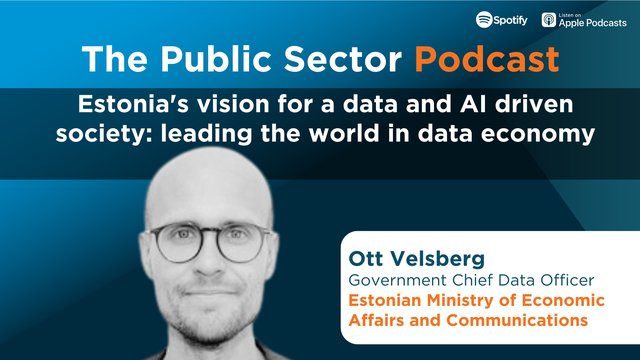
The recent Government Innovation Exchange event showcased the panel "An Inside View of a Government AI Journey", featuring industry and government representatives discussing the evolving role of AI in the public sector. The panel consisted of Neil Chaudhry, Associate Administrator, Office of Planning & Analytics at the US Department of Transportation; Anand Narasimhan, Chief Technology Officer at S-Docs; and George Thomas, President at Connected DMV.
The session shed light on how AI is being leveraged to create value, the challenges of integrating AI into existing systems, and the future trajectory of AI for public sector leaders.
The session covered a wide range of topics. Below are the 4 key points and takeaways. Click here to access the full session video.
1. AI as an Augmentative Tool
Neil emphasized the critical role of AI as an augmentative tool rather than a replacement for human intelligence. This viewpoint challenges the common misconception that AI aims to replace human jobs entirely. Instead, he sees AI as a powerful aid that enhances human capabilities, particularly in complex and data-intensive environments. He elaborated on this by explaining how AI supports his organization in overseeing an extensive network of pipelines and hazardous material shipments across the United States.
"AI is definitely making a big impact on the way we do our work. I always think of it as augmented intelligence, not artificial intelligence."
Neil's organization manages a staggering 3.3 million miles of pipeline and supervises 1.2 million shipments of hazardous materials daily. By leveraging AI, the US Department of Transportation can more effectively monitor, analyze, and respond to potential issues within their large network. AI tools assist in identifying patterns, predicting potential failures, and providing actionable insights that would be nearly impossible to achieve through human effort alone. This collaboration between human expertise and AI capabilities leads to more informed decisions, increased safety, and improved operational efficiency.
2. AI and Productivity
AI has improved productivity, particularly in the public sector where efficiency is paramount. Anand underscored how AI has evolved from being a promising technology to a practical tool that significantly enhances productivity. This transformation is particularly evident in the way AI-driven tools are being deployed to streamline routine tasks and enhance operational efficiency.
"In the public sector world, productivity is super important. In the last year or two, technology has finally met the productivity demands. In some sense, automation existed ... but now it's finally where AI is truly taking the low-hanging fruit of productivity."
One compelling example provided is the use of AI-powered transcription tools in virtual meetings. Traditionally, note-taking during meetings is a tedious task that requires significant manual effort. AI transcription tools have revolutionized this process by not only transcribing conversations but also extracting key insights and summarizing discussions. This capability demonstrates AI's potential to handle complex tasks that go beyond simple automation, thus freeing up human resources for more strategic activities.
3. Integration of AI in Ecosystems
The discussion also touched on the necessity of integrating AI within broader technological ecosystems. Neil emphasized that AI's true potential is unlocked when it is part of a comprehensive system of technologies, working synergistically rather than in isolation. For instance, in managing the extensive network of pipelines and hazardous material shipments, AI is used alongside other advanced technologies such as predictive analytics, natural language processing (NLP), optical character recognition (OCR), and robotic process automation (RPA). By combining these technologies, the organization can monitor and analyze data more comprehensively, predict potential issues, and respond proactively.
One key aspect of this integration is the use of AI to process and interpret large volumes of data that are generated by various sensors and monitoring devices. For example, NLP can be employed to analyze inspection reports and maintenance logs, extracting valuable insights that might otherwise be overlooked. Similarly, OCR can be used to digitize and analyze documents, while RPA can automate routine administrative tasks, freeing up human resources for more complex decision-making processes.
Overall, the integration of AI into broader ecosystems represents a holistic approach to leveraging the technology's capabilities. By combining AI with other advanced technologies and aligning it with organizational goals, businesses and government agencies can maximize the value derived from AI deployments. This integrated approach not only enhances operational efficiency and decision-making but also ensures that AI applications are sustainable, ethical, and beneficial in the long term.
4. Ethical and Competitive Considerations
From a government perspective, there is a significant challenge of implementing AI ethically and competitively. The U.S. Government prioritizes diversity and inclusivity in its AI strategies, aiming to democratize access to AI tools and ensure that they do not disproportionately benefit certain groups over others. Neil commented:
"Our value system is about diversity, making sure that everybody has a voice, and ensuring that we are advocating, especially in the government, on behalf of the underrepresented and marginalized communities. It’s about democratic access to these tools so that we are not channelling success to one particular group of stakeholders."
The ethical and competitive considerations of AI implementation are multifaceted and require a balanced approach that promotes innovation while ensuring fairness, transparency, and security. By fostering collaboration, addressing ethical challenges, and adapting workforce strategies, both the government and industry can harness the full potential of AI to drive positive societal impact. This holistic approach ensures that AI technologies are developed and deployed in a manner that is ethical, equitable, and beneficial for all stakeholders.
To view the full video from this session and other keynotes and panel discussions from the Government Innovation Exchange, click here.



































